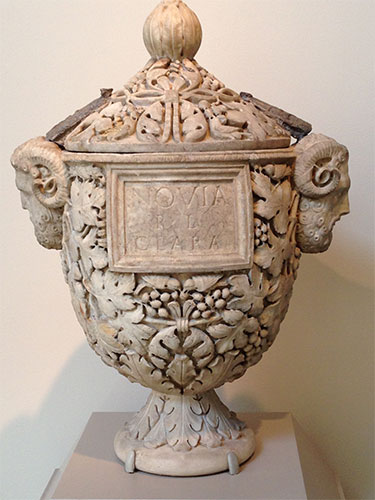
While there are many urns that have been purposely made to contain the ashes of a loved one, there are just as many if not more urns that have been made for multiple purposes. From decorative mantel pieces, to vase shaped containers or bowls, most urns that have been made with a lid can and have been used as cremation urns.
Urns derive their name from two Latin words; “Urna” – meaning a jar or vessel, and “Urere” – meaning to burn. This is why you can find overlapping search results and auction listings for “Urns”. Different cultures have different designs for either type, so you could be thinking you are buying a nice decorative urn that was meant to spruce up the place, only to later discover that you have bought yourself an ornate cremation urn. Consider the two following point to help determine if what you are looking at is a cremation urn, or a vase, water/wine jug, or an ornamental garden piece.
Contents
Cremation/Burial Urns
Depending on which culture or time period we are talking about, will determine the shape, appearance, decorations (if any) and material of the urn. As cremation was the funeral method of may cultures, they would consider their urns to be burial urns, not cremation urns.
- While most cremation urns were usually made with a matching lid. Older urns and urns from different cultures may not have used a lid per se, they may have corked or capped off the opening instead.
- Older pieces, such as Roman burial urns, may not have their lids anymore. Many where damaged or lost over time.
- The modern style and shaped urn, has been around since the 1870’s. Before then cremation/burial urns were even bulky and heavy. In most cases, they were of a more simplistic design, and intended to only store the ashes of the deceased as a sign of respect, nothing more.
- More well to do families may have opted for a more ornate design to show off their wealth, so these urns may have been decorated with imagery, or have been master by master potters or stonemasons, and have intricate carvings and elaborate designs.
- The urns could have been made of different materials such as clay, marble, bronze, wood, brass, stone and even glass. Each region and time period would have used what was available to them at the time for their constructions.
- So do your research into a particular piece and check that the design and material matches the alleged time period and location. Also look for signs of wear and tear through repeated use, to help determine if it was a jug (wine stains are a dead give away), or an urn (there may be a name, religious verse or symbol that could be found either inside or outside of the urn pending culture or time period).
Other More Practical Types of Urns
If the urn has a practical appearance to their design, such as a pouring lip, carrying handle(s), or decorated in such as way that it would not convey respect for the deceased, then you may have yourself a jar, vase, or jug.
- Most of these common urns did not have a lid, and were intended to hold liquids for pouring such as wine, vinegar, water and even oils. They were not meant/designed for long term storage, only for immediate use.
- Other urns were used as vases, housing flowers and other decorations. Most of these urns were highly decorated, either in design and shape, or detailed art.
- Another form of urn falls more in line with braziers, in that they had large openings,and were made to weather the elements. These large and bulky urns would either hold water like a basin, or be used to light the path or entrances. Their size alone is usually enough to give themselves away as not being a cremation/burial urn.
Which Cultures Used Cremation/Burial Urns
The act of cremating the deceased has been found to date back as far as about 7000 BC. The earliest known evidence of a deceased’s ashes being collected into pottery urns, can be found in an early Jiahu sitethe site in China.
During the Stone Age in Europe, around 3000 B.C., evidence has been found that shows that the dead were cremated, and their ashes collected to give them respect.
Evidence of cremating has been found in North America, Spain, England, and Portugal, all dating back to during the Bronze Age (2500 – 1000 B.C.).
During the Mycenaean Age (1000 B.C. – 800 B.C.) cremation
became customary in Greece, and an integral part of the elaborate Grecian burial custom.
27 B.C. to 395 A.D. saw cremation being widely practiced in the Roman Empire. The cremated remains of honored soldiers, upper class citizens, and imperial family members, were generally stored in elaborate urns which were later stored within a columbarium-like building. Some more simplistic and plain looking urns could be found for members of lower standings.
Decorative pottery urns have also been found in western Russia among the Slavic population. As well as urns being discovered in Hungary, northern Italy and even Ireland.
Many Cultures stopped the practice of cremation, once they converted to Christianity. Prior to this, funeral cremations could be found in most cultures a cross the globe.
Why Did Early Cultures Choose to Cremate Their Dead
There are many reasons for why different cultures preferred cremation over burial. Some where practical, others steeped in religious believe.
- Viable land may have been scarce. Before the development of sufficient technology, finding workable land was difficult. This meant that most graves would have been too shallow, and wolves and other animals may have gotten to the body after burial.
- Trying to bury someone during the winter months in many laces had its own set of problems, so many funerals were avoided burying the snowy seasons.
- Religious beliefs. Many pagan religious beliefs practiced funeral by fire. Arguably the most well known of which would be the Viking’s own ship burials, in which an individual of high honor was sent off to the after life with their grave possessions.
- Nomadic lifestyles. Many nomadic cultures found the practice of cremation easier to do. Should someone die during travel, the group many not have wanted to bury their brethren just anywhere, and carrying a dead body around may not have been an option. By cremating the dead, they were able to bring them back home with them, or to a sacred site for a proper burial.
- Disease control. When disease broke out, following battles, or after a natural disaster had taken many lives, the easiest and quickest way to handle the dead was through cremation. Multiple bodies could be cremated at once.
Simply put, if not for religious reasons, cremation was the most practical method available to people at the time.
When Did Burials Become Preferable to Cremation
With the rise of Christianity, cremation became rare as the early Christians considered it to be against their cultural beliefs and in violation of the religious practices. This meant that for thousands of years cremations and in turn cremation/burial urns, became a rare thing.
As Christianity spread across the world from 400 A.D. to prior to the 1870’s, it became difficult to find burial urns from various cultures as their beliefs were replaced with, or heavily influenced by early Christian values. This means that for a time, cremations did not occur, if at all, during the height of Christian influence at different points in a regions history.
To this day there are many religious beliefs that prohibit the practice of cremating the dead, Eastern Orthodox Churches, Orthodox Jews, and Muslims all discourage cremation.
So should you be offered a cremation/burial urn from a region during a period where it would have been heavily influenced by early Christianity, the Eastern Orthodox Church, Orthodox Jewish, or Islamic culture; then more then likely you are being offered an aforementioned practical type of urn, and not a cremation/burial urn.
When Did Cremation Come Back into Favor
Once again cultural shifts are to thank for the reemergence of cremation being a viable funeral practice. As our understanding of disease control/prevention has improved, as well as the dwindling amount of land for grave sites our views regarding religious beliefs and cremations has become more relaxed. The 1870’s saw the biggest turn about with regards to the acceptance and popularity of cremations.
- In 1873, an Italian Professor by the name of Lodovico Brunetti reviled the design basis for today’s cremation urns and crematories during the 1873 Vienna Exposition.
- In 1874, Queen Victoria’s surgeon Sir Henry Thompson founded the Cremation Society of England, which led to crematories being setup Woking in England, and Gotha in Germany.
- In 1876, Dr. Julius LeMoyne built the first crematory in Washington, Pennsylvania, leading the way for cremating to become a more common funeral practice in the U.S.
- In 1901, the first crematory was built in Australia.
- By 1913, there were almost 52 crematories in North America.
- In 1963, Pope Paul VI lifted the ban on cremation.
- In 1966, Pope Paul VI allowed Catholic priests to officiate at cremation ceremonies.
Examples of Cremation/Burial Urns
Whether you are interested in ancient urns, or more modern urns, there are many different urns available on the market from different time periods and cultures.
Roman Alabaster Cinerary Urns
Carved out of a soft mineral/rock known as alabaster, these beautiful urns can be expected to have a FMV of between $115,000 to $180,000 USD.
Roman Marble Cinerary Urns
Though often more intricately carved then their alabaster counter parts, marble was the more common material that was used for Roman urns. Like alabaster, marble is a soft material that was easily carved and shaped. A piece that is made of marble, can be expected to have a FMV of between $20,000 to $100,000 USD.
Other Ancient Cultures Burial Urns
From China’s Song Dynasty, to the Pre-Columbian Chimila, and Rio Magalena of South America, or even the ancient Etuscans of Italy, many other cultures had their own variation of burial urns. Though not as highly sort after as the Roman or Greek urns, these gorgeous pieces are still highly prized by those who are interested in the cultures that they originate from.
Depending on their condition, and which culture/era they are from, pieces like these could be expected to have a FMV of as little as $500 USD, to $15,000 USD if not more.
Modern Artistic Pieces
Not all art is reserved for canvas. Today, there are artist like William Morris who made beautiful works of art out of glass. Retired in 2007 William made each piece by hand and as such his work is highly sort after by collectors of both art and urns making some of his pieces worth as much as $50,000 USD FMV.





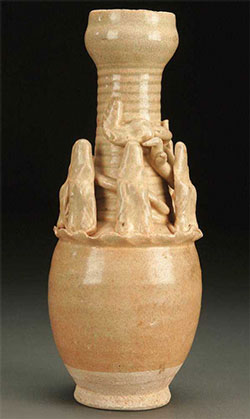
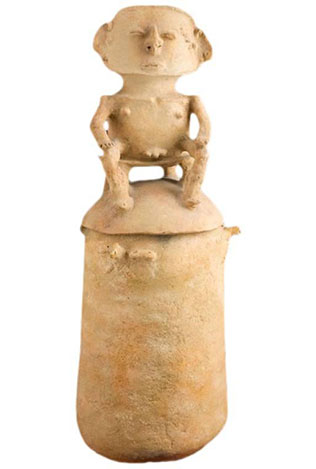
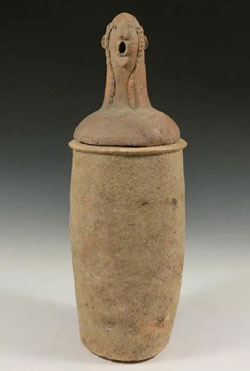
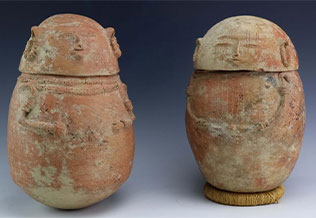
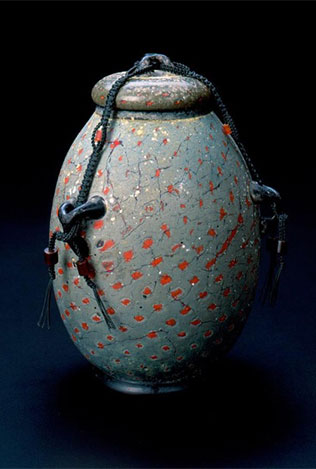
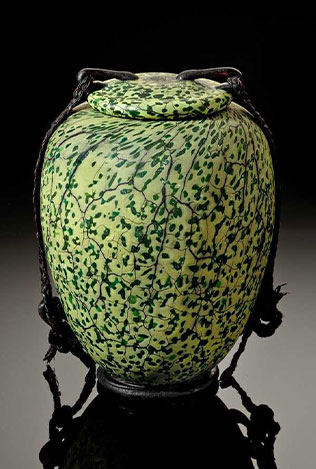
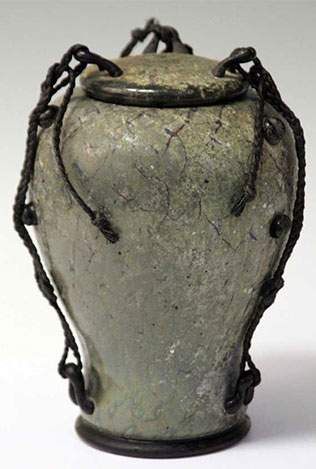
Leave a Reply